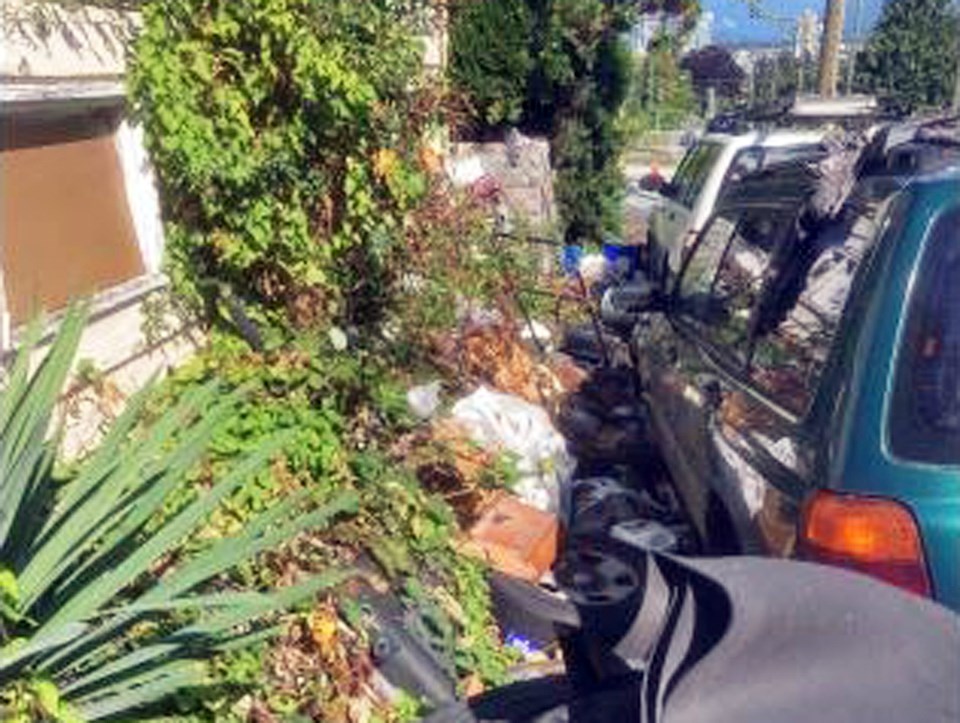A few years back, City of Burnaby senior social planner Margaret Manifold got a call from citizen support services about a man with a hoarding problem.
Volunteers with the department, who visit local seniors and help with things like shopping and rides to medical appointments, had come upon the case of a man who ended up in hospital and then had no place to go because his hoarding behaviour had cost him his home.
“He was in a seniors residence,” Manifold says, “so it was a multi-unit building, and the provider, the operator of the housing, was just, ‘He’s gotta go. We can’t have this unit in this state.’ It wasn’t a very compassionate approach.”
Pilot project
The city wanted to do better, Manifold says, so it decided to launch a hoarding response team.
It took longer than expected to get it off the ground because of COVID-19, but a pilot project was launched in January, and the team is now managing between 12 and 15 cases.
“It bubbles up all over the place in the city in terms of our properties coordinators, bylaw officers and the fire department and whatnot,” Manifold says of hoarding.
Over time, stacks of accumulated items can pose a fire hazard, attract pests or collapse on top of people inside homes.
The health and safety risk can also spill over into adjoining properties, and Manifold says complaints come in from neighbours, strata councils, rental property managers and the like.
In the past, she says the city has taken a somewhat “blunt” approach, with various departments simply trying to get the person involved into compliance with bylaws and regulations as soon as possible.
But that approach doesn’t work, according to Manifold, because it doesn’t get down to the underlying reason for the hoarding.
She says the city is working to create a “more collaborative, more compassionate” approach.
The team is small so far, consisting of one Burnaby Fire Department fire prevention officer and one member of the RCMP’s mental health team.
Small beginnings
Even that small beginning is music to the ears of Dr. Christiana Bratiotis, associate director of UBC’s Centre for Collaborative Research on Hoarding.
“I’m always deeply encouraged when I see a community that has elevated the problem of hoarding to the level where it’s getting public attention and, to some degree, public resources and public awareness,” she says. “I have regularly seen throughout North American that these efforts start small and grow.”
Because hoarding is a private mental health problem that often results in public health and safety issues, Bratiotis says a community’s response to it needs to be coordinated and involve multiple sectors.
And it should also have both “a carrot and a stick,” she says.
Because only a small fraction of people who struggle with compulsive hoarding “raise their hand and ask for help,” according to Bratiotis, she says many need a “stick” – such as a fire prevention officer – to drive home how their problem is effecting other people and what they need to do to get into compliance with laws and regulations.
But effective hoarding response efforts also need a carrot, Bratiotis says, such as a psychiatric nurse who can access resources designed to motivate people to address their hoarding behaviour.
“So, the fire official is there to say, ‘Look, you’ve got to get the stacks down; you’ve got to get it away from the radiator,’ whatever it is, and the nurse would say, ‘What supports do you need in order to come into compliance with what the fire official has just said?’” Bratiotis says.
Besides the direct impact the Burnaby hoarding response team will have in dealing with individual cases, Bratiotis says the very existence of a dedicated team helps raise awareness about the issue.
“There really has to be an awareness-raising as well as education within a community, and I think having a response team certainly lets people know that this is a priority issue among all of the many other public priority issues in a community,” she says.
‘More sensitively’
While the new Burnaby hoarding response team responds to cases, Manifold says the city is developing a process for tracking those situations and looking at the staff time involved in order to gauge whether further resources are needed.
“It needs to be handled more sensitively than what we’ve done in the past,” she says.
To learn more about hoarding, visit the UBC Centre for Collaborative Research on Hoarding webpage.
Follow Cornelia Naylor on Twitter @CorNaylor
Email [email protected]



